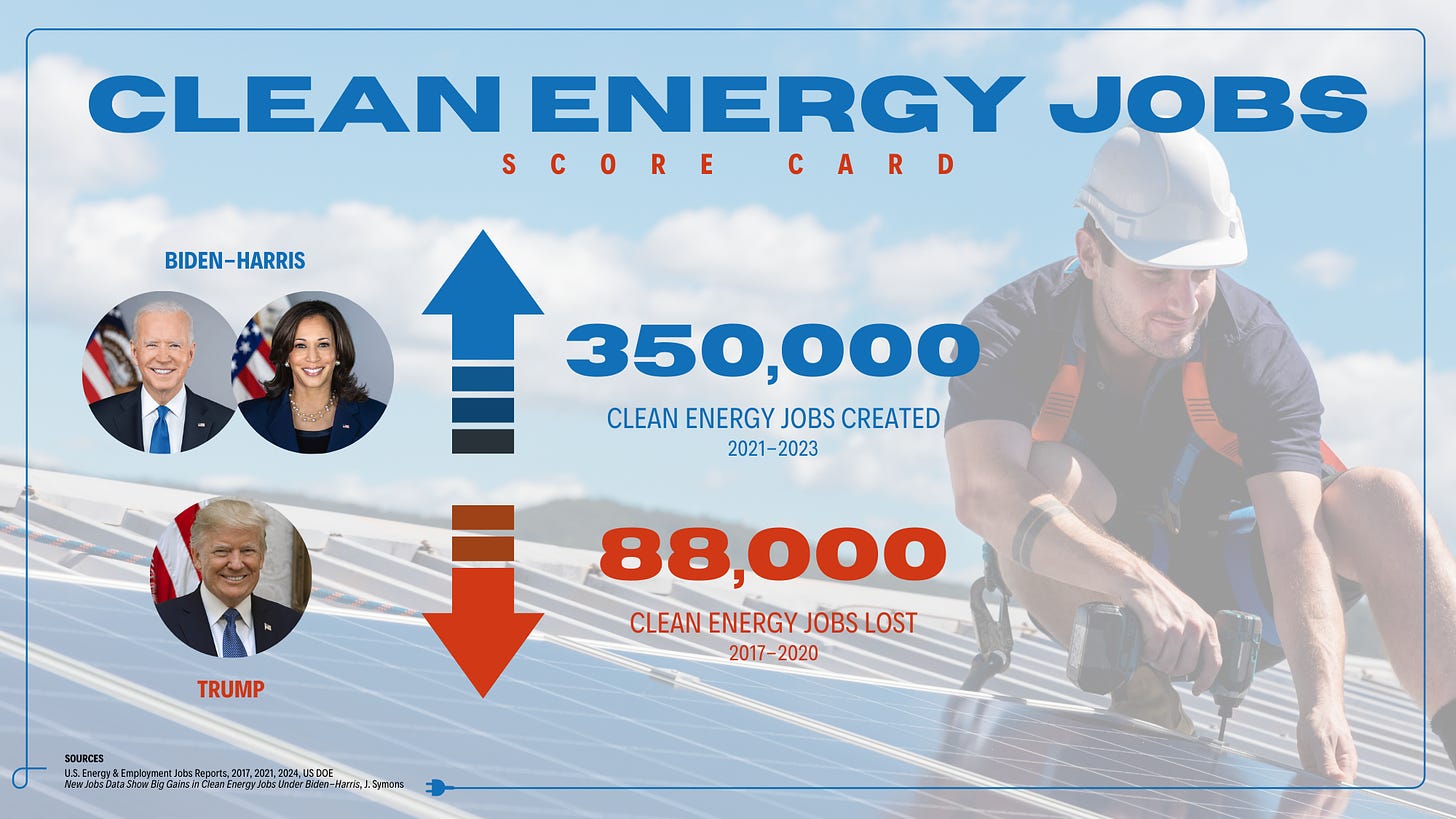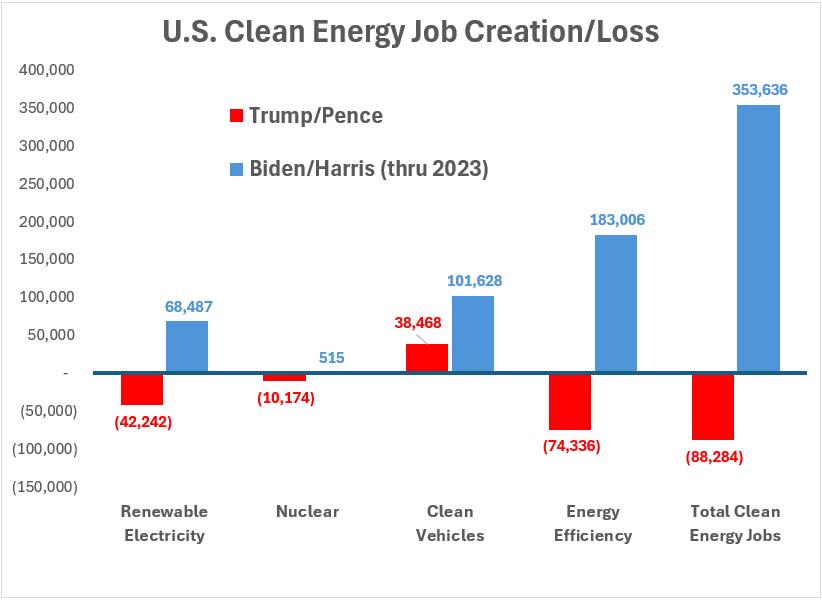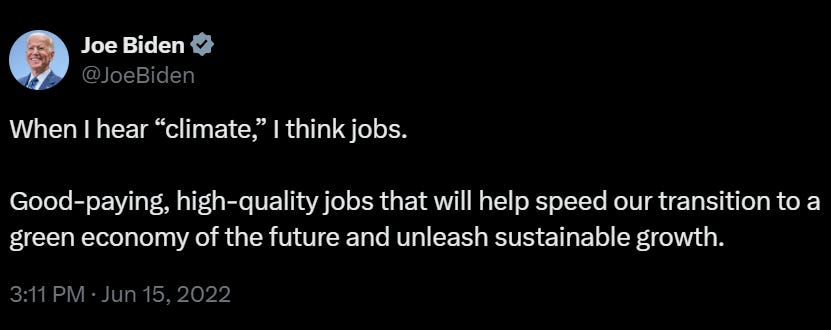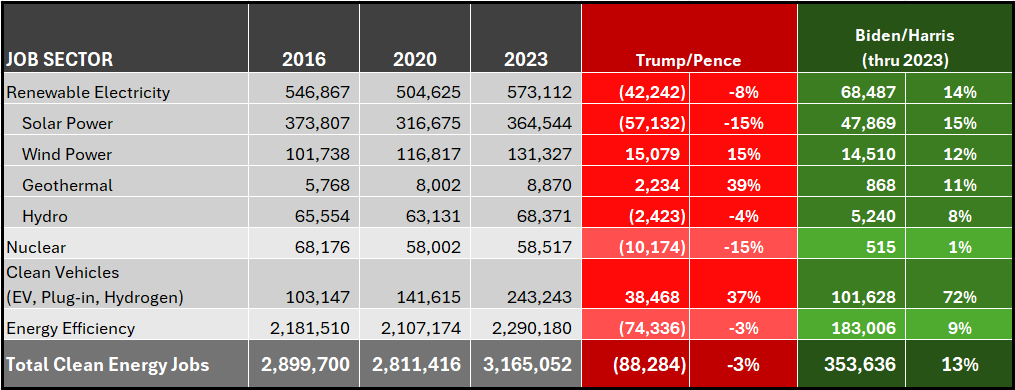New Jobs Data Show Big Gains in Clean Energy Jobs Under Biden-Harris
Here's how the jobs numbers compare to four years under Trump...
“Since the end of the Cold War in 1989, America has created about 51 million new jobs. I swear I checked this three times. Even I couldn’t believe it. What’s the score? Democrats 50, Republicans one.” — Bill Clinton
Bill Clinton sent fact checkers scurrying after uttering the above words at the Democratic Convention. Their verdicts: “Correct” (USA Today) and “True” (NY Times).
These are big numbers, spanning multiple decades. They don’t shed much light on one of the fastest growing job sectors in America: clean energy. I have been impatiently awaiting updated energy jobs data. Finally, the wait is over. The Department of Energy, which compiles annual reports on U.S. energy jobs based on annual surveys from 42,000 businesses, reported out the 2023 data earlier today.
Clean Energy Jobs Scorecard
Biden-Harris: 350,000 clean energy job created
Trump: 88,000 clean energy jobs lost
I have crunched the numbers, along with DOE data from 2016 and 2020, in order to compare clean energy job creation under the Biden-Harris and Trump-Pence administrations. Here’s the bottom line:
The United States has added more than 350,000 clean energy jobs in the first three years of the Biden-Harris administration, including jobs in solar, wind, energy efficiency, and battery-powered vehicles.
In comparison, America LOST 88,000 jobs in these clean energy sectors under Trump.
Here’s the breakdown based on my tabulations of DOE data (I have also included a table with more detailed numbers at the end of this post).
Admittedly, the news that the United States surged forward on clean energy jobs under Biden and went backwards under Trump is not a surprise. Biden has been clear that creating jobs is the cornerstone of his climate agenda:
Trump’s hostility toward wind and solar has been equally clear:
Excerpts from the DOE Report
In 2023, clean energy was the driving factor for growth in the energy sector – jobs in clean energy grew by 4.2%, more than twice as much as the already-robust job growth rate of 2.0% in the overall economy.
Both the solar and wind sectors reported strong job growth – jumping 5.3% and 4.5% respectively.
For the first time ever unionization rates in clean energy, at 12.4%, surpassed the average rate in the energy sector of 11%, driven by rapid growth in unionized construction and utility industries.
The sectors experiencing significant growth include zero-emission vehicle and renewable energy, as well as transmission, distribution, and storage – sectors crucial to achieving the Administration’s goal to reach 100% clean electricity by 2035 and delivering cheaper, more resilient energy to every community.
Looking forward, DOE projects that the Inflation Reduction Act will double the share of electricity generation from clean sources by 2030, driven by growth in solar and wind. As the energy industry ramps up to meet this growth, construction is booming in many parts of the country. The energy construction sector added nearly 90,000 energy jobs, growing 4.5%, almost double the economy-wide construction employment growth of 2.3%.
The energy workforce is younger than average, with 29% of workers below the age of 30.
Latino and Hispanic workers held nearly one-third of the new energy jobs created in 2023, growing by 79,000 workers.
Veterans accounted for 9% of the U.S. energy workforce, greater than their representation in the overall U.S. workforce.
California (545,207), Texas (261,934), New York (177,202), Florida (172,115), and Illinois (130,473) have the greatest number of clean energy jobs.








